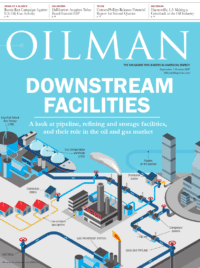This article is part four of a four-part series on optimizing IT costs.
Revenue pressures in an oil downturn can lead to irrational IT cost cutting that adds risk and reduces competitive advantage, or it may result in the development of a long-term, continuous, cost optimization capability. Once the appropriate analytical model, collaboration, transparency, and opportunity timing considerations are put into place, not only can IT groups often obtain immediate cost targets, they can do so in a manner that is sustainable and aligned with business. This often leads to greater long-term cost efficiency and transparency. To avoid uncontrolled cost increases during the next upturn, a long-term financial maturity model is required.
During the focus on cost optimization, significant effort is applied to understanding cost drivers, relationships, and impacts. Once targets are selected, prioritized, and achieved, sustaining the same level of focus, transparency, and financial analysis may require long-term commitment to IT finance maturity. Many IT organizations lack financial skills, tools, or metrics to maintain visibility and focus on continued optimization.
Understanding the gaps in IT finance maturity is key to transforming into a value-based organization, partially achievable through the IT cost optimization program. The maturity path of many organizations usually begins with a focus on total spending and progresses towards value-based metrics and decisions.
- Level 1 – Total spend focus and disorganized Chart of Accounts
- Level 2 – Financial data tied to IT assets. Cost reduction approach based on budget targets. Initial consideration of value analysis in project selection.
- Level 3 – Cost are associated with IT activities. Chargeback, or show back, costs are clear to the business. Delivery versus cost impact are analyzed. Standardized business case for project submission that extends beyond initial hardware and software costs.
- Level 4 – Executive-level IT value dashboard developed, tracked, and used to understand impact of initiatives and changes. Benefit realization of investments are tracked and used to better analyze new projects. Portfolio management principles applied to project selection, scheduling, and budget decisions.
- Level 5 – Value based approach considered in operations, project investments, and governance activities. IT financial analysis is key to decision processes with the business.
Sustaining a focus on optimization and value requires proficiency in three key process areas:
1. Financial Management
- Having the appropriate tools and reporting technology to maintain transparency across the COA, including historic trends, cost relationships, and forecasts.
- Tracking all improvements, and impediments to improvement, to IT operations and efficiency. This includes impact of business demand, compliance, security, or efficiencies promised within project business cases.
- Maintain a view of cost relationships. This could include computing costs driven by increased utilization, network bandwidth due to company growth, licensing growth due to mobility initiatives and other key strategies.
2. Investment Governance
- Validate, assess, measure, and prioritize all demand on the IT organization and impact on maintenance costs.
- Utilize consistently applied financial measurements to fully understand the value proposition or risk abatement of IT investments.
- Ensure projects investments are balanced across value achievement and strategy progression. Some projects, while not entirely justified through value progression, may still lay the foundation for strategic progression and business impact.
3. IT Asset Management
- Ensure all IT assets are fully tracked to and associated to related costs including maintenance, support, licensing impact, vendor agreements, etc.
- Track asset utilization to ensure maximum return on investment. This includes unutilized licenses, underutilized compute capacity, or equipment spending excessive time in inventory and thereby depreciating or losing warranty value.
4. Financial Performance Dashboard
An additional enabler for sustainment is a well maintained financial performance dashboard. IT OPEX and CAPEX should be analyzed regularly for alignment KPI’s tied to measures such as:
- Enterprise IT cost goals, such as percent of revenue or operating expense.
- IT spend as percent of oil production costs.
- IT cost benchmark KPI’s, such as spend per employee.
- IT investment targets, such as expenditures toward maintenance costs, project support, or innovation.
There are numerous metrics which may provide more meaning within specific enterprises. The key consideration is to establish these KPI’s and track IT performance against the metrics to help maintain transparency, drive accountability, and mature the understanding of IT decisions on both immediate and long-term value enablement.
As oil continues to hover below $60/barrel, IT leaders will continue to face pressure from the business. Every dollar reduced, which does not impact production, helps the organization adjust to the new market. It is critical that IT does not shirk this responsibility by only focusing on near-term costs, missing impactful, strategic opportunities, or simply pushing IT costs back out the business. This comprehensive approach requires a level of consolidated accountability and transparency which could be new for many IT organizations. Gaining the leadership skills, financial tools, and optimization methodology can make IT a true partner with the business, doing their part to keep the company successful while holding ground on capabilities which will drive even more success when the market turns around. Cost pressure can become an opportunity to improve IT value and business partnership, rather than disconnected reaction that damages post progress, and impairs the ability to drive more success in the future.
Lawrence Eribarneis a Principal at Enaxis Consulting with over 20 years of experience as a technology leader performing IT organizational transformations as both an industry leader and IT advisor. Lawrence has a cross-industry background covering media, technology, military, and a strong emphasis on energy and manufacturing. Lawrence focuses heavily on IT strategy, portfolio management, cost optimization, operational process improvement, and value realization.
Prior to Enaxis, Lawrence held senior leadership roles within several global companies with responsibilities across strategy, planning, and service delivery. Lawrence also led IT service delivery and advisory engagements within SAIC at several Fortune 100 energy clients. He earned his BS from the University of Houston and MBA from Texas A&M University.






